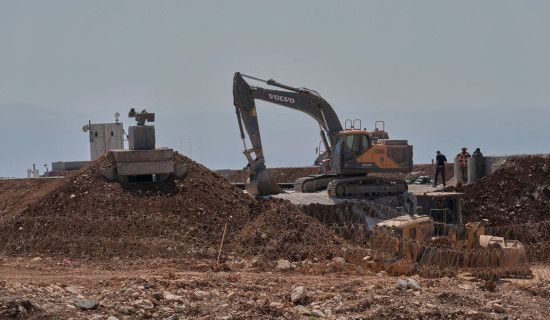- Tuesday, 26 August 2025
Lithium can be white gold of energy transition
France, Dec. 3:The automotive industry’s adoption of lithium-ion batteries has turned lithium, a chemical element until now extracted in small amounts, into a strategic resource whose production will only increase.
The dreamed-of transition to a fully electric future within the next 10 years has sparked a worldwide race to mine and refine this new white gold to fuel the transport of tomorrow.
Home to more than 65 percent of the world’s known reserves, could Latin America’s “Lithium Triangle” formed by Argentina, Bolivia and Chile become the Saudi Arabia of the 21st century?
Lithium (Li) is a chemical element that at its purest takes the form of a soft silver metal. Present in more than 145 types of mineral ores, it is never found in its native metal form. Instead, it can be extracted from hard rock, as in Australia, or recovered by solar evaporation in large saltwater brine basins, as in the South American Andes – the simplest and cheapest method. In 2020, the EU declared lithium a “critical raw material” along with cobalt and nickel, which are also used to make the batteries needed for the energy transition. Lithium (Li) is a chemical element that at its purest takes the form of a soft silver metal. Present in more than 145 types of mineral ores, it is never found in its native metal form. Instead, it can be extracted from hard rock, as in Australia, or recovered by solar evaporation in large saltwater brine basins, as in the South American Andes – the simplest and cheapest method. In 2020, the EU declared lithium a “critical raw material” along with cobalt and nickel, which are also used to make the batteries needed for the energy transition.
Lithium-ion batteries are based on a flow of lithium ions between a positive electrode containing cobalt or manganese and a negative graphite electrode. Developed in the 1970s, lithium batteries have since become the most efficient means of storing electricity. The technology has been widely adopted by the automotive industry over the past decade, and the need for lithium will likely multiply by a factor of 18 by 2030, and a factor of 60 by 2050.
Electric car batteries can weigh up to 400 kilograms and contain at least 10 kg of pure lithium. A Tesla contains 80kg of lithium, an electric bike 300 grams and a bus as much as 200kg.
One in five cars sold in the European Union in August 2023 were 100 percent electric, according to the European Automobile Manufacturers’ Association (ACEA). Factoring in hybrid models, sales of electric cars have reached almost 50 percent of new vehicles sold since the start of 2023. But according to Eurostat, at the end of 2022, they still accounted for just 0.8 percent of the total number of vehicles currently in circulation in Europe. The ban on combustion engines in the EU is set to take effect in 2035.
The price for a tonne of lithium was €5,500 in 2020 and reached a peak of €80,000 at the end of 2022. It is currently trading around €25,000 (prices are in Chinese yuan). The value of lithium represents just 1 to 2 percent of the final price of an electric vehicle battery.
European governments and manufacturers have been slow to realise the consequences of banning the sale of combustion engines on the continent as of 2035. Carmakers need to secure access as soon as possible to the raw materials needed to make lithium-ion batteries, and take ownership of the other stages of their production.






-original-thumb.jpg)










